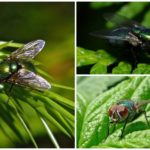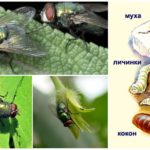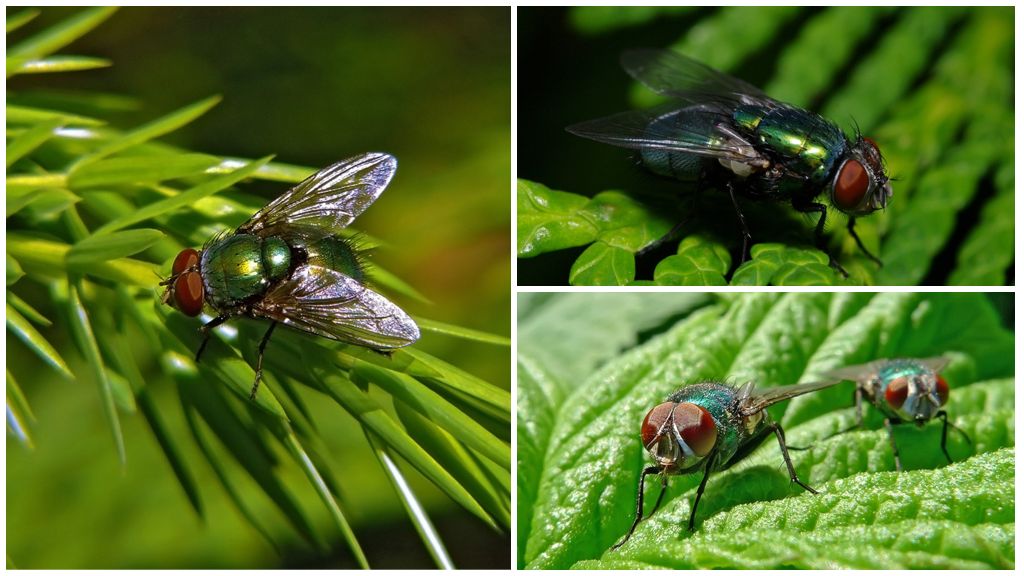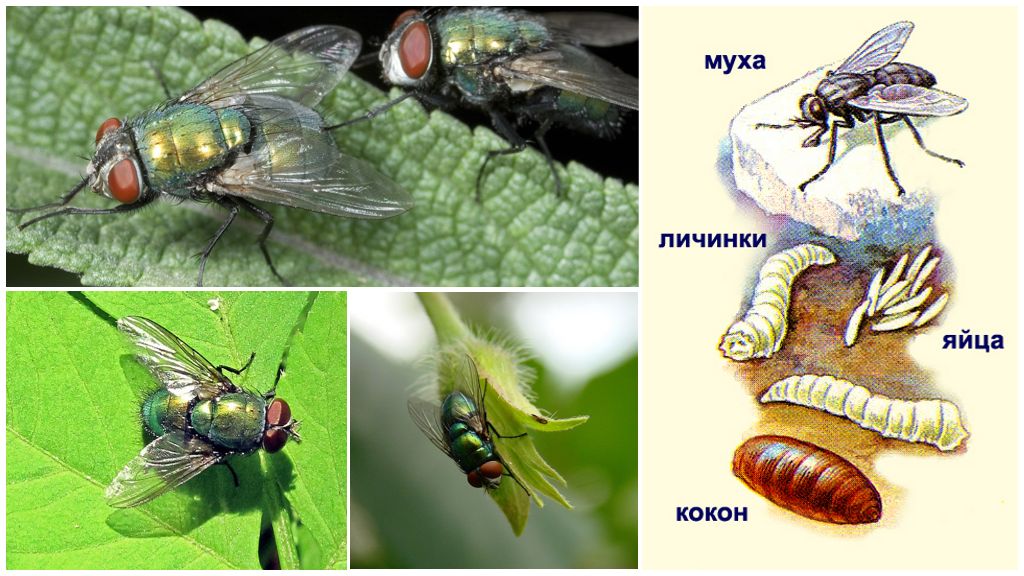Description and photo of green carrion fly
- Green fly
- Green fly
Green fly belongs to a large family meat flies - about 900 species combined in 23 genera. Other names - padalny, calliforid, sarcophagus, meat. Distributed throughout Russia, lives in the warm season. It brings tangible benefits to nature, harms people, animals. The green fly is one of the largest representatives of the genus, has an attractive color.
Features of appearance
Outwardly, a green fly fly is different from house (room) fly larger body size, bright green color with iridescent, metallic tint. External and internal body structure perfect fit for her lifestyle.
- Size from 8 mm to 2 cm.
- The whole body is densely covered with short villi.
- There are small antennae on the head.
- Well expressed head with large eyes of red, brown color.
- A pair of transparent wings with well marked membranes. Located along the body, slightly spread apart.
- The second pair of wings are underdeveloped, called the halters. They perform an important function - maintain balance in the air, allow you to hang in one place, and also create sound during the flight.
- 6 pairs of legs. At the tips is going to a special fatty substance that allows flies to easily hold on any surface in a vertical, horizontal position. This explains how the insect sits quietly, crawling on the ceiling and on the glass on the windows.
A photo of a green fly is shown below. The insect lives in the wild, enters the house by accident or under certain circumstances.
Interesting!
To search for food fly able to fly up to 20 km, almost 3 km is able to fly non-stop. Oriented by a sensitive sense of smell, excellent vision.
Breeding
The green carrion fly becomes mature in 24-36 hours after it leaves the pupa. The female finds a favorable place, lays a huge number of eggs. Has them in groups or one by one. About 200 eggs reproduce at a time. Their size is only 1 mm, oval shape, white color. In all my life from 14 days to 2 months lays about 2 thousand eggs.
A typically green meat fly develops in corpses or necrotic tissues of a living organism. For the development of larvae requires a lot of protein. The female lays eggs on the corpses of animals, birds, humans, in meat, as well as in deep wounds, as well as in excrement. It attracts insects smell of rot, bacteria, sweat.
Stages of development
The larvae in the egg develop from 8 to 36 hours. Yellow-white worms, no larger than 1 mm in size, are born. Got the name "maggots". The body is smooth, the head is dark in color, the end of the body is blunt, clipped.
Maggots have an excellent appetite, absorb food around the clock. Suction liquefied food, which is pre-treated with a special secret.With favorable temperature conditions - about +30 degrees Celsius, the larvae go through all stages of development in 7-11 days. Shed three times, increasing in size up to 11 mm.
At the last stage, after the third molt, the larva crawls into a dark place, digs into the soil, pupates. Pupa is solid, black, oblong shape. After 10-14 days a fly appears with a green belly.
Green flies multiply rapidlyare developing rapidly. Within one month a whole colony of insects appears from one female. People often have questions about where pests come from, which yesterday was not yet visible.
Interesting!
Some species of scavengers viviparous. They sit on the meat, feces immediately lay a large number of small larvae. Maggots quickly penetrate the tissue, begin active development. After 1-2 days, the spoiled product is full of worms. The question often arises where the parasites could come from. As soon as the female lands for a few minutes, the pest colony will appear rapidly quickly.
Benefit and harm
Padal fly in nature performs extremely important role - participates in the decomposition of corpses.However, due to this feature, contact with pathogens is dangerous for humans.
Harm:
- Green fly carries dangerous bacterial, viral infections, helminth eggs. The most serious disease is leprosy, the most common is intestinal infection. In the human body penetrate through food.
- Females lay eggs in deep wounds on the human body, animals, the larvae make numerous moves, go through the full cycle of development. Their presence brings pain, discomfort.
- Green fly larvae in case of accidental ingestion provoke the development of miases. Eggs, getting into the stomach, in most cases die, but with weak immunity, problems with digestion penetrate into the bloodstream, spread throughout the body or develop in the intestine. In intestinal miases, they come out with vomit and feces. Localization in the eyes is dangerous for temporary or partial loss of vision; the worm is surgically removed. Infiltration of moldy worm in the brain is dangerous death.
- Getting into the meat, fish during pickling, cooking, significantly spoil the quality of the product, appearance. Products are not to be consumed.
Benefit:
- During the period of the First World War, doctors noticed one peculiarity - the larvae of carrion flies ate rotting tissues and prevented the spread of infection. The substance they secrete to liquefy food is a powerful antibiotic. This feature is used now in medicine, in the case of difficult healing wounds that cannot be treated with antibiotics. Maggots are grown under sterile conditions.
- Green fly larvae are used as feed for birds, fish, and amphibians. Store in the refrigerator to prevent pupation.
- Maggots of green flies are of two kinds. The first smooth ones are exclusively scavengers. The second, covered with hairs, are predators. Appear a few days later, eat smooth maggots. The development cycle of the green padal fly is well studied, therefore often the worms determine the exact time of death of an animal or person in forensic science.
A green fly enters the house through open windows, doors, in the absence of favorable conditions, immediately tries to find a way out. If it finds rotting food, meat, fish, begins active livelihoods.









